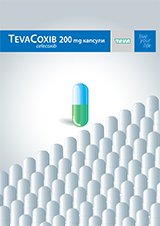Biotechnological Equipment
Advanced search
Article
Biotechnology & Biotechnological Equipment 27 (3), 3877 - 3884 (2013)
http://dx.doi.org/10.5504/bbeq.2013.0013
BIOINFORMATICS
A SOFT COMPUTING QSAR ADAPTED MODEL FOR IMPROVEMENT OF GOLDEN ROOT IN VITRO CULTURE GROWTH
Valeriya Simeonova1, Krasimira Tasheva2, Georgina Kosturkova2, Dimitar Vasilev3
- Sofia University “St. Kliment Ohridski”, Faculty of Mathematics and Informatics, Sofia, Bulgaria
- Bulgarian Academy of Sciences, Institute of Plant Physiology and Genetics, Sofia, Bulgaria
- AgroBioInstitute, Bioinformatics Group, Sofia, Bulgaria
Correspondence to: Valeriya Simeonova E-mail: v.n.simeonova@me.com
Abstract
Golden Root is a rare medicine plant, difficult for cultivation, with a wide potential in treating cardiovascular and other diseases because of its biologically active compounds. Therefore there are researches about in vitro cultivation of Rhodiola rosea. It is well known that biotechnological experiments provide slowly and in a non-efficient way the needed protocols about multiplication, growing and rooting in in vitro nutrient media. The previously collected data of such experiments were analyzed and computationally trained in order to identify the nutrient media that give the best results for growing and rooting, taking into account the limitations such as insufficiency of the plant material and in vitro nutrient media cost.
The proposed analysis contributes to the optimization of biotechnology experiments giving new directions for the theoretically fitting quantity of nutrient medium ingredients necessary for in vitro growth and rooting of Golden root, taking into account criteria such as biology and cost effectiveness concerning the experiment and results.
“Similar biological activity is provided by common structural properties” – this is the main concept of modeling by Quantitative structure–activity relationship model (QSAR), which is a common method used for property prediction of biochemistry molecules and drugs. Based on this we adapted the concept, making the following assumptions: “biological activity” can be every result from an in vitro experiment such as the type of developed tissue and percentage of necrotic tissues; “structural properties” can be the properties of the nutrient medium, i.e. the concentrations of chemical compounds in the medium. QSAR could be defined as a method based either on regression models, or on artificial intelligence models. Here Artificial Neural Networks is proposed as a soft computing method for creating a model of dependences between nutrient medium, type of explant, type of nutrient medium, cultivation days, medium price and the initial response during the in vitro cultivation. Forecast results were subjected to applied basic statistical analysis, clustering and graphical interpretations.
Keywords
QSAR, AINN, multiplication coefficient, Rhodiola rosea, in vitro development, soft computing


